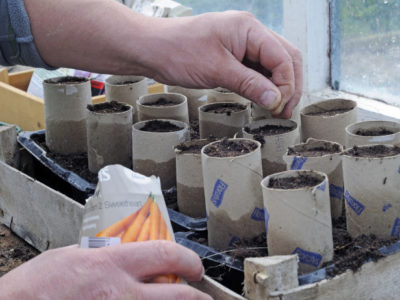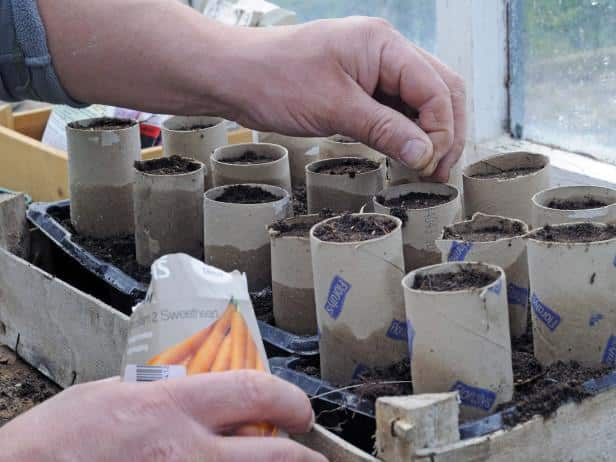 It might be cold outside, but there’s plenty you can still do to keep the “gardening spirit” going year round. Performing these simple winter chores will keep your plants in tip-top shape and ready for spring.
It might be cold outside, but there’s plenty you can still do to keep the “gardening spirit” going year round. Performing these simple winter chores will keep your plants in tip-top shape and ready for spring.
1. Inspect your houseplants periodically, especially those you brought indoors right after summer’s end. Look for signs of insect damage or disease. Repot and repair as necessary. A mild soap spray will work for many insect infestations.
2. Rotate your indoor houseplants a quarter of a turn every week to prevent them from leaning and growing off-center. Remember, they will grow towards their light source.
3. Your newly planted shrubs and trees should be mulched for winter. This helps to keep water in and disease out. This is especially crucial for areas that do not get a large amount of winter precipitation or rain.
4. Brush fresh snow off the branches of your shrubs and trees as soon as possible. Fresh snow is light, but it can freeze and refreeze over and over. This can damage your branches and the entire plant over time. New shrubs and trees are especially susceptible to damage from freezing ice and snow.
5. There’s a reason why evergreen trees, greenery and wreaths are so popular this time of year. Besides being beautiful Christmas decorations, they allow you to bring a little bit of the outdoors, indoors. Berry-producing plants, like Nandina and Holly are also nice to use in your decorating.
Take the guesswork out of gardening with these weekly to-do lists!
6. To keep your Christmas greenery fresh longer, cut the stems, and then soak the entire limb in water overnight. Completely submerge your garlands and wreaths in a galvanized tub or bathtub for 12 hours.
7. Save tubes from your Christmas wrapping paper. They can be cut into 4-5 inch sections and used as natural seed starting pots. They also make excellent recycled cutworm collars.
8. Take inventory of your seed supply. Decide what seeds need to be ordered, as seed catalogs will be arriving in the mail soon. (My favorite time of year!)
9. On mild winter days, perform weeding as needed in the garden. Wild onions still grow this time of year in many areas…despite the cold! For warmer climates (Zone 7 and above), you should be weeding regularly by late January, as the weather allows, so that your asparagus and strawberry beds are ready for planting time.
10. Speaking of strawberries, cover them with a floating row cover— this way they will fare better over the winter and may bear fruit earlier come spring.











